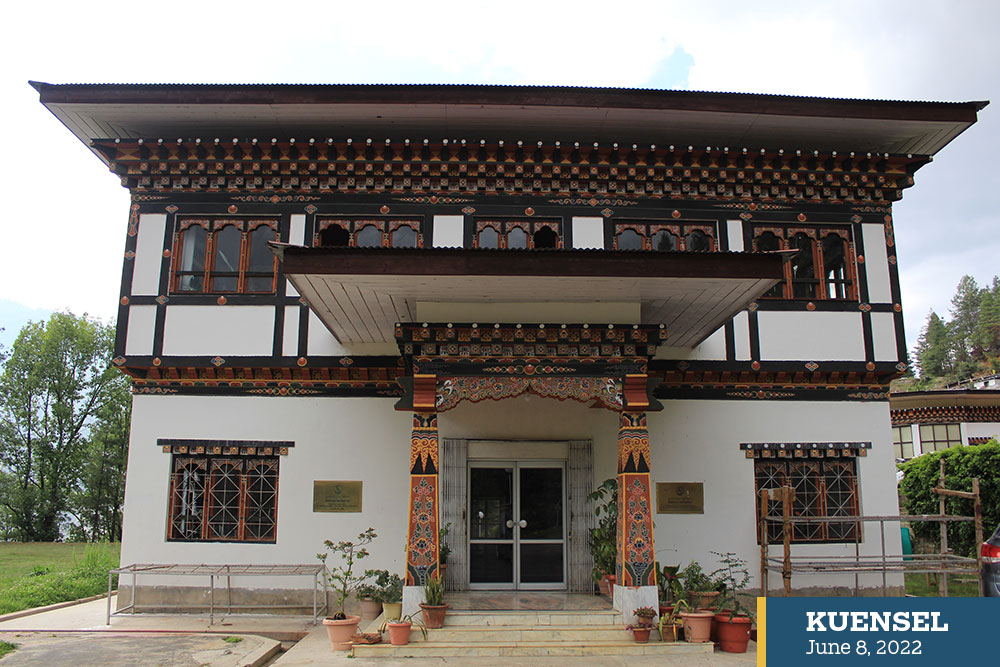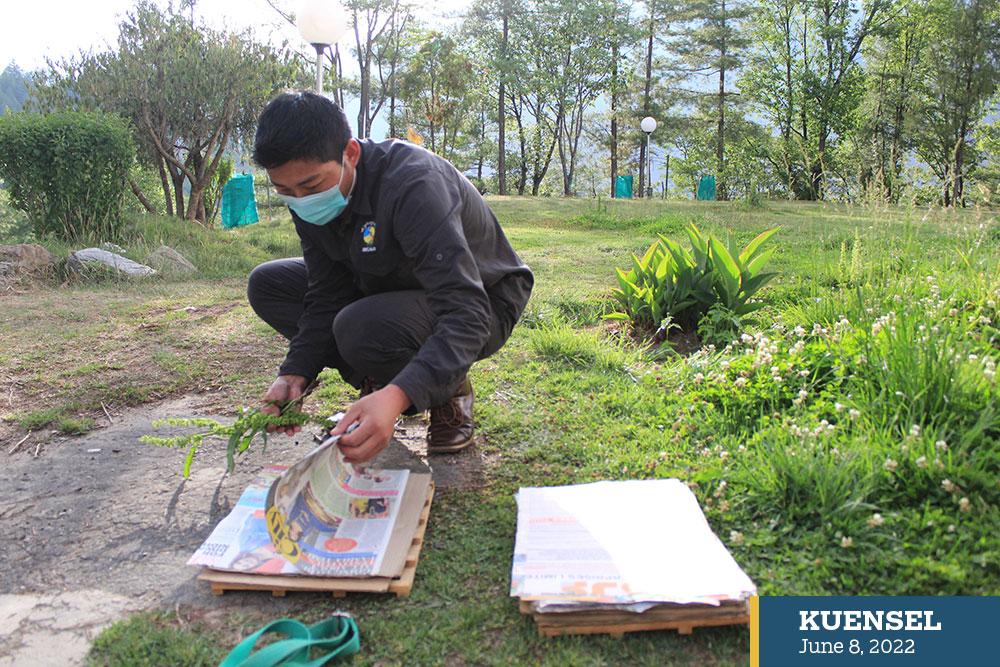Chhimi Dema
Walk into the National Herbarium in Serbithang, Thimphu, and you could be walking into an indoor garden of exotic flowers and plants. Steel cupboards in the huge room house more than 20,000 different plants from around the country.
Some specimens in the only internationally certified herbarium in the country dates back to 1914.
National Biodiversity Centre (NBC)’s principal biodiversity officer, Rinchen Yangzom, says that the herbarium provides basic taxonomy of the plants which helps in identifying them for commercial or research purposes.
The herbarium, she says, also serves as a fundamental source of information for identification of conservation priority species and areas in the country.
The National Herbarium in the National Biodiversity Centre has been operational since 2003.
The specimens–collected in different time–are a tool to study the impact of climate change.

Rinchen Yangzom says that the information on the specimen such as its date of collection during flowering or fruiting time can show the impact of climate change. “The change in time indicates the impact of climate change.”
In 1998, the “National Herbarium and Flora of Bhutan Project” were initiated with financial support from DANIDA. The National Herbarium was established and the publication of three volumes comprising nine books on the Flora of Bhutan was completed.
The specimens from early botanical collections and expeditions were mainly deposited at the renowned international herbaria of the Royal Botanic Garden Edinburgh, the Royal Botanic Garden Kew, the British Museum (Natural History), Tokyo University, and the Indian Botanic Garden.
The duplicates were housed at the herbarium with the then Department of Forests. In 1987, it was shifted to the Forestry Research Centre at Taba in Thimphu.
Rinchen Yangzom says that several specimens deteriorated due to lack of proper storage facilities.
Currently, the researchers can avail the herbarium’s database for study and identification of plants.
The collections include over 2,000 ferns (pteridophytes), 600 mosses (bryophytes), and 100 insect fungi.
After studying the characteristics of the plant – like its leaves, flowers, and fruits – it is then classified according to the international classification system of Engler and Prantl, the established process of identifying plants and herbs.
However, the plants undergo a process before they are shelved in the herbarium.
The plants collected for the herbarium are pressed with the newspaper or plant press and dried in the sun or oven-dried.
The dried specimens are disinfected in a deep freezer for 48 hours after which they are mounted on a specialised paper for it.
The specimens are labelled and catalogued in the steel cabinets.
Rinchen Yangzom says that the lack of capital is a major challenge in conducting research in the fields.
“Collection and discovering species from the wild are expensive. Without fund or budget, we can do only little,” she says.
The herbarium is now preparing to digitalise the specimens.


